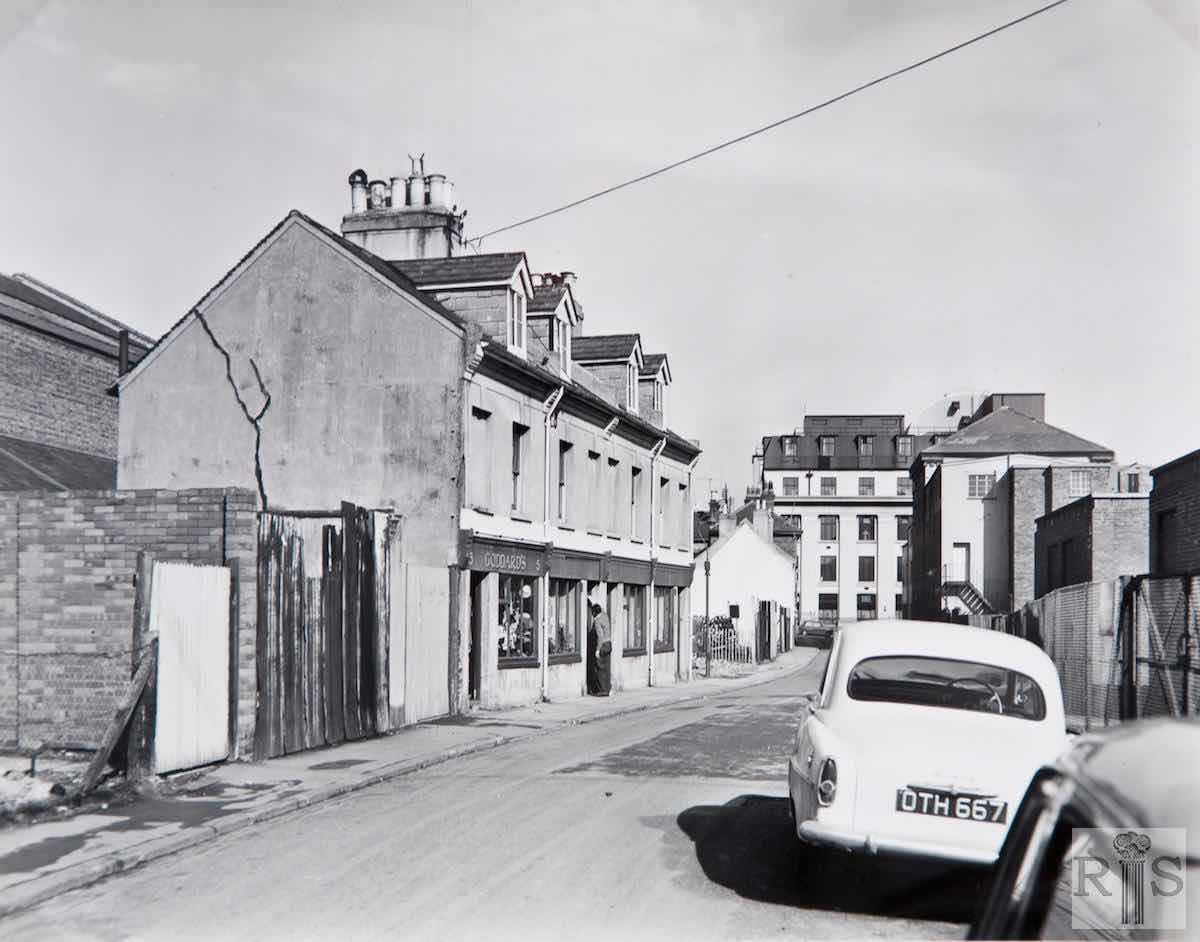
James Gray: There was little left of this busy street when these photographs were taken during 1962 and 1963. As recently as 1934 it consisted of 50 small dwellings, mostly built between 1800 and 1820. Clearance of some buildings on the east side started in 1935 and by 1947 only two remained. On the west side. demolition was slower and a few houses are still there. When these go, it is the intention to straighten the street and get rid of the slight bend. The name derives from Springs Walks, the former name of Church Street. jgc_25_133
2018: Nothing remains of the delightfully named Spring Gardens. The left, west side is now occupied by a car park and the PureGym facility and the right by an electricity substation and the side of William Collier House, a residential block run by a housing charity. The only surviving building is the large, distinctive edifice in the centre of the photo that holds the Royal Mail’s sorting office. (Photographer: David Jackson)
James Gray: There was little left of this busy street, when these photographs were taken during 1962 and 1963. As recently as 1934 it consisted of 50 small dwellings, mostly built between 1800 and 1820. Clearance of some buildings on the east side started in 1935 and by 1947 only two remained. On the west side demolition was slower and a few houses are still there. When these go it is the intention to straighten the street and get rid of the slight bend. The name derives from Springs Walks, the original name of Church Street. jgc_25_134
2018: No houses remain on the west side of Spring Gardens. In place of the houses seen in the 1960s photograph there is now the side of the PureGym building and a private car park. (Photographer: Chris Nichols)



